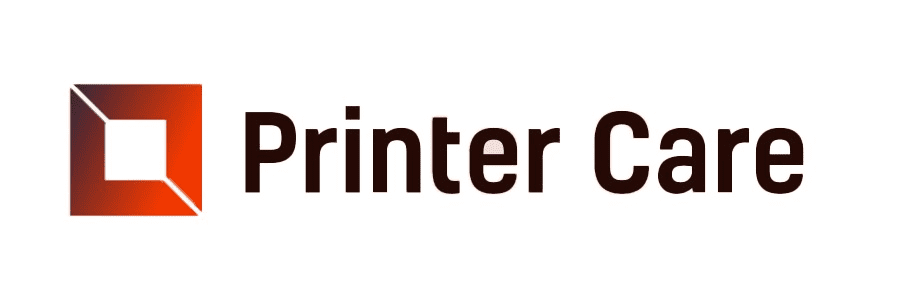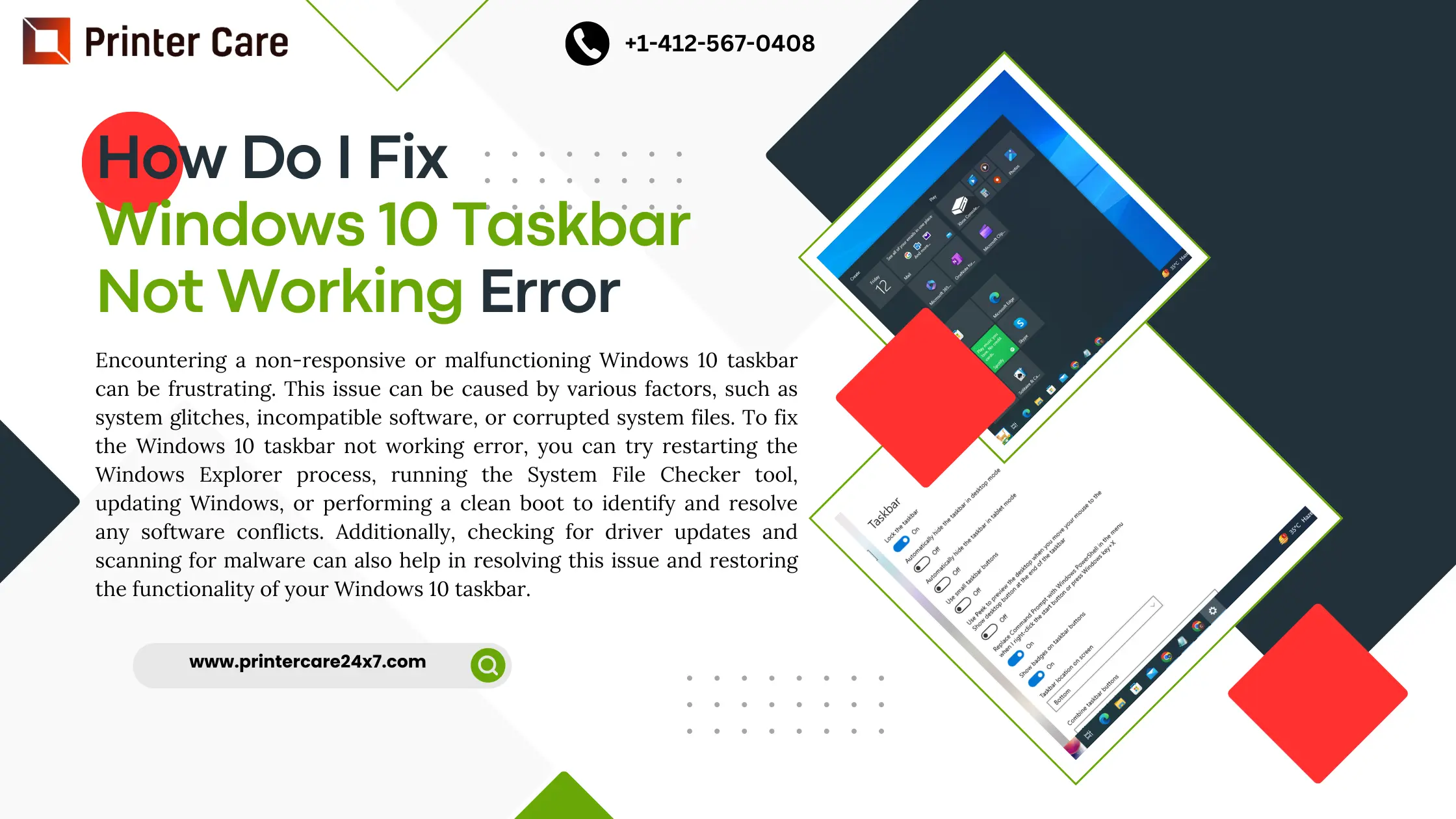From the start, the Windows desktop has included a taskbar. While it has changed throughout time, often for the worse, it has always been necessary for quick access to files and apps. The Windows 10 Taskbar is no exception, and when the Windows 10 Taskbar does not work or fails to function properly, it makes using your computer quite difficult. If your Taskbar isn't showing up, let's see what we can do to fix Windows 10 taskbar not working.
Why Is Windows 10 Taskbar Not Working?
The Windows 10 taskbar not working for a variety of reasons, including software problems and more complex system errors. Here are a few common causes:
- Corrupted System FilesIf essential system files required for the taskbar's functioning become corrupted or damaged, it can lead to the taskbar not working properly.
- Software Conflicts: Certain third-party applications or recently installed software can conflict with system processes, causing the taskbar to malfunction.
- Outdated Drivers: Outdated or incompatible device drivers, especially for graphics or sound cards, can lead to issues with the taskbar.
- Windows Updates: Sometimes, updates released by Microsoft can introduce bugs or compatibility issues that affect the taskbar's functionality.
- Malware or Virus Infections: Malware or virus infections can compromise system files and settings, including those related to the taskbar.
- Faulty Windows Services: Errors or failures in critical Windows services responsible for managing the taskbar can cause it to stop working.
- User Profile Issues: Problems within the user profile, such as corrupted settings or preferences, can also impact the taskbar's behavior.
- Hardware Issues: In rare cases, hardware failures, such as a malfunctioning hard drive or memory module, can manifest as issues with the taskbar.
- Settings and Configuration Changes: Accidental changes to system settings or configurations, either by the user or by software installations, can disrupt the normal operation of the taskbar.
How To Fix Windows 10 Taskbar Not Working?
Here are some of the necessary steps to follow to fix Windows 10 taskbar not working:
Unhide the taskbar
Sometimes the taskbar is hidden, giving the impression that it has failed. This may confuse the user. If you cannot view the taskbar or the Windows sign on your screen, go to the taskbar settings to resolve the issue. Simply follow these steps.
- Press the Windows and I buttons to open Settings.
- Then select "Personalization."
- In the left pane, click on Taskbar. Look for In desktop mode, automatically hide the taskbar.
- Then toggle the switch under it to OFF.
- The taskbar should appear on the screen again.
Restart Windows Explorer
This is the simplest way to fix a Windows 10 frozen taskbar or Start menu. Restarting the Windows File Explorer from the task manager will resolve the issue. To do this
- Press CTRL + ALT + DEL to open the Security Options dialog box.
- Then select Task Manager from the list.
- Look for Windows Explorer on the tab for processes.
- Then select it and right-click on it.
- After that select "Restart."
This will restart File Explorer and fix the issue Windows 10 taskbar not working.
Boot Windows 10 into safe mode
Many users indicate that booting Windows 10 computers into safe mode resolves the issues with the Start menu and taskbar. However, some users suggest that this is temporary, and the issue may repeat. You can try and check if it fixes the problem. To restart the Windows into safe mode:
- Press WIN + R, type msconfig, and press Enter.
- Then, In the System Configuration box, select the Boot tab.
- Then under the Boot options section, select Safe Boot and make sure the marking is set to Minimal.
- Click Apply, then OK.
This takes your computer into safe mode. Once inside, restart the system in regular mode. This should resolve your issue.
Create a new administrator profile
In certain rare situations, the Windows 10 taskbar not working could be related to a problem with your user account. You can try logging into another user account or creating a new one to resolve this issue. To create a new administrator account:
- Press the Windows and I key to open the settings.
- Then select Accounts.
- After that, click Other users in the left pane.
- Thereafter, click on Add someone else to this computer.
- Click on I do not have this person's sign-in information.
- Click on "Add a user without a Microsoft account."
- Then you need to enter the details and click Next to follow further instructions.
Perform an SFC scan
Windows system files are important to the efficient operation of your computer. If you suddenly notice the Start menu or Taskbar becoming unresponsive, it could be due to corrupted or missing system files. The elevated command prompt can be used to execute the System File Checker, also known as SFC. This command verifies the integrity of all system files and replaces or repairs those that are damaged. To perform this check:
- Open an elevated Command Prompt.
- Then type sfc/scannow and press Enter.
- Wait for the scan to be completed.
- Once the scan is complete, close the window and restart your computer to see if the problem has been resolved.
Do a System Restore
System Restore is an excellent tool for restoring the system to its prior or normal condition, i.e., before you begin experiencing problems with the start menu and taskbar. If you created a System Restore point in advance, you can proceed with the instructions given below. However, before doing this, create a backup of your data. To do this -
- Press WIN + I to open the Settings app. Startup
- Then click on Update & Security.
- Click Recovery in the left pane, then Restart now under Advanced Startup.
- Following that on the WinRE screen, select Troubleshoot.
- Finally click on System Restore.
Perform Windows Reset
If none of the options listed above work for your problem, you might try resetting Windows 10. Before proceeding, make a thorough backup of your data to an external storage device. Once the backup process is completed, carefully follow the steps below to reset your PC:
- To open the Settings app, press WIN+I.
- Then click on Update & Security.
- In the left pane, choose Recovery, followed by Get Started under Reset this PC.
- A window will appear, asking you to either keep my files or delete everything. Make your choice and proceed.
- In the following stage, you will have to pick between cloud download and local reinstall. Choose whatever is most suitable for you.
Note: Selecting cloud download will download a new image of Windows OS and delete any custom OS image that came preinstalled on the PC.
- Proceed through the process carefully by following the reinstallation instructions on the Ready to Reset this PC screen. When you are ready, click the Reset button.
This approach installs a clean and fresh Windows image, which should resolve the unresponsive taskbar and start menu issue.
How to Recover Data from Windows 10?
1. You need to get data recovery software for Windows 10. Then, install it properly on your Windows 10 computer.
2. Open the software and choose This PC or Hard Disk Drive from the left side of the primary interface.
- This PC allows you to recover data from any existing partition.
- Hard Disk Drive will scan the entire disk.
3. Select the drive from the list and click the Scan button to begin searching for files on it. Then, wait for the scan to complete until the necessary files are found and listed in the recovery results.
4. Check the files and folders indicated in the scan result to see if it assisted you in locating all of the necessary data.
- If so, please mark the data you require with a checkmark in front of each.
- If not, please wait for the scan to produce the best recovery results.
5. You should select the Save option in the lower right corner of the software screen. Then, select a secure location to store the recovered data and click the OK button to confirm your choice.
Conclusion
The taskbar is one of the most important features of Windows 10. They improve usability and make navigation easier. However, some small faults make these two fail and freeze suddenly. In this article, we explained some simple ways to fix the Windows 10 taskbar not working issue. We hope the strategies outlined in this post help you resolve the Windows 10 taskbar not working error.
Frequently Asked Questions
What is a Taskbar?
The taskbar is a feature of the operating system that appears at the bottom of the screen. You may use the Start button and menu to search for and run apps. You can also use it to check out any apps that are currently running. The Notification Area, which appears just next to the taskbar on the right, allows you to view the date and time of ongoing activity.
Why does my bottom taskbar not work in Windows 10?
Go to Settings > Personalization > Taskbar and ensure that Automatically Hide the taskbar in desktop mode is enabled. It's also worth disabling and re-enabling this toggle while you're here. Sometimes an option becomes stuck, and toggling it restores proper functionality.
How can I fix the Windows 10 taskbar glitch?
Update the graphics card driver. May be the graphics card driver causing the taskbar to flicker. If your graphics card driver is out of date, you may encounter the "taskbar flickering Windows 10" or "Windows 11 taskbar flickering"
How do I restart the taskbar in Windows 10?
To start the task manger, press Ctrl + Shift + Esc. Then under the Processes tab, scroll down until you see Windows Explorer. You can restart this process by either highlighting it and clicking the Restart button at the bottom or right-clicking it and selecting Restart.
How can I fix a frozen Start Menu or Taskbar in Windows 10?
To resolve the frozen start menu or taskbar, restart Windows Explorer from the Task Manager. CTRL + ALT + DEL > Task Manager > Processes, then right-click Windows Explorer and select Restart.
How do I remove the printer icon from my taskbar?
Display and Hide Icons in the Windows 10 System Taskbar:
- Open the Settings icon.
- Then select Customization.
- After that click on the Taskbar.
- Now you can choose which icons show up in the taskbar.
- Finally, toggling between On and Off will allow you to show and hide icons, respectively.
Why won't my printer icon appear?
There are several reasons why the problem of "printer icon not showing in devices and printers" often occurs. For example, it could happen if the system or printer driver is corrupted. In addition, the issue of the printer icon not appearing could also arise if Bluetooth is not supported.

